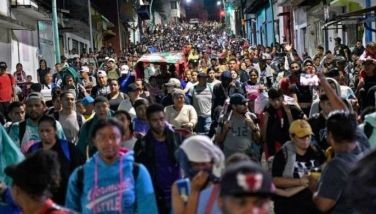Where have all the missing American workers gone?
WASHINGTON — The unemployment rate has been on a slow downward trajectory since the recession ended nearly five years ago. While the overall jobless level has dropped to non-recession levels, the number of the working-age people with jobs is barely over 6 in 10, hovering at a level reminiscent of the late 1970s.
In May, the US workforce-participation rate — the combination of those with jobs and unemployed workers actively seeking them — was just 62.8 percent, the same as the month before. Job markets have been essentially flat since October.
Where have all the missing workers gone?
A key factor, nearly all agree, is the growing exodus from the job market of Baby Boomers. Born roughly in the post-World War II period from 1946 to 1964, these workers are now at or fast approaching retirement age.
Another reason is that some employment-intensive industries that suffered the most during the Great Recession, especially in manufacturing and construction, have yet to fully rebound.
But perhaps the most significant factor is unemployed workers "who just drop out of the job market after one, two or three years of looking for work and not being successful," said Carl Van Horn, a professor of public policy at Rutgers University who studies workplace dynamics and employment trends.
Recent surveys suggest more and more long-time unemployed workers are abandoning the search for another job and leaving the nation's workforce.
"And they are disproportionately older workers," Van Horn said. "We have a large number of older (unemployed) workers who are not old enough to retire, yet they are facing discrimination in the workplace and have found it nearly impossible to get another job."
There's a flip side to that, though, Van Horn suggests: "As the economy gets stronger, as it continues to grow, eventually some of those discouraged workers will come back into the labor market, and we'll have a higher labor-participation rate."
But that hasn't happened — yet.
"We know that the reason unemployment is so high right now is pretty simple: employers haven't seen demand for their stuff pick up in a way that would require them to bring on more workers, put that factory back on line, get more people to work," said Heidi Shierholz, chief economist for the Economic Policy Center, a labor-oriented Washington think-tank.
"It's going to be this way for a while. We're in a long slog," Shierholz said, noting that the recession of 2007-2009 was the harshest downturn since the 1930s Great Depression.
"We really are in a recovery. Things are getting better," Shierholz added. "It is agonizingly slow. But we are going in the right direction."
It may be quite a while before the jobless rate falls back to 5 percent and below, long the informal standard pegged by economists as a typical employment level for non-recession times.
But 5 percent may no longer be the norm.
In February 2011, economists at the San Francisco Federal Reserve Bank suggested that around 6 percent might be a more appropriate unemployment rate as the "new normal." But some analysts suggested even that target may be unrealistically low.
"Our economy is leaving our unemployed folks further and further behind," said Robert A. Funk, CEO and Chairman of Express Employment Professional, an Oklahoma City-based service which tries to line people up with jobs and help client companies find suitable employees.
"But if people quit looking for work at a rate like this, it makes our job much, much more difficult," said Funk, a former chairman of the Federal Reserve Bank in Kansas City.
And while economists note high levels of unemployment among older working-age people, joblessness is disproportionately high among younger workers as well.
Generation Opportunity, a US nonpartisan youth advocacy organization which keeps close track of job levels for younger adults, reported even higher effective unemployment rates for those under 30.
"School is out for summer, and more than four out of five recent grads don't have jobs. My generation deserves better than an economy in which a 15.4 percent effective unemployment rate for 18-29 year olds is considered a good month," said Patrice Lee, director of outreach for the organization.
Even though the overall unemployment rate has been essentially flat since last October and is holding at high levels with 3.4 million Americans counted among the ranks of long-term unemployed, it's been five months since federal emergency unemployment benefits expired, leaving the burden up to the individual states.
The unemployment rate is now back to where it was before the Great Recession. It was 6.3 percent in May, same as the month before.
Still, the share of Americans who are employed is stalled below 59 percent, well below the 63.3 percent peak in March 2007 and 64.7 percent of April 2000, said William Spriggs, chief economist for the AFL-CIO. "That difference represents the multi-million job gap needed," Spriggs said.
- Latest
- Trending






























